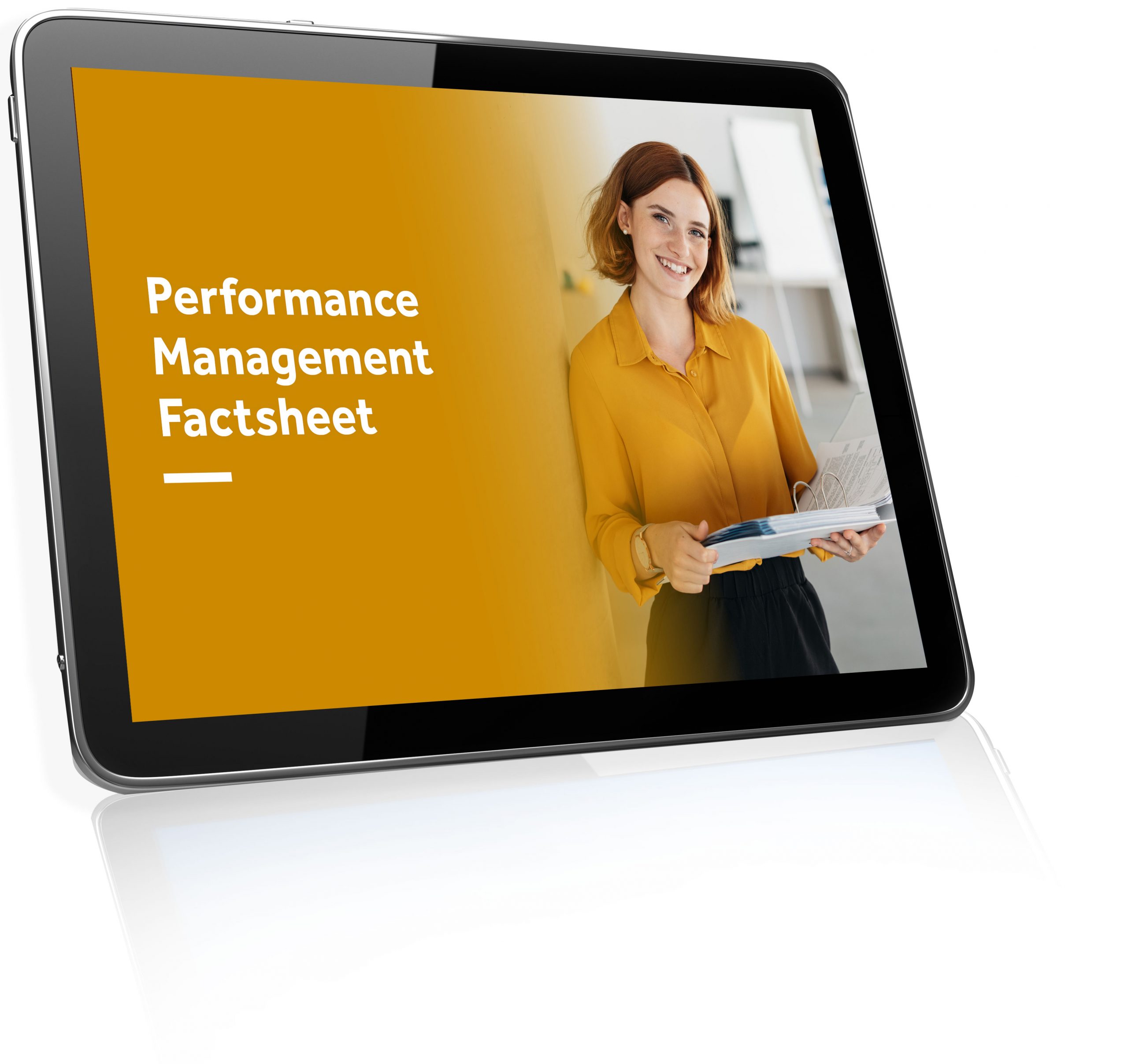
What are key performance indicators (KPIs)?
Key performance indicators (KPIs) are a quantifiable measure used to evaluate a company’s overall performance. It’s also common to assign key performance indicators to specific teams and employees. This helps business leaders track how well each part of the business is functioning and contributing toward the company’s wider goals.
It’s important to understand that key performance indicators are not goals within themselves. Instead, they are a means to express what a business wants to achieve, when it wants to achieve it, and whether or not it is on track to do so.
Before this guide goes into deeper detail, here are the high-level facts about KPIs:
Key performance indicators measure a company’s success vs. a set of targets, objectives, or its competitors.
KPIs can measure a business’s financial health. Financial KPIs include gross profit margin, revenues minus certain expenses, or the current quick ratio (liquidity and cash availability).
Customer-focused KPIs generally centre on per-customer efficiency, customer satisfaction, and customer retention.
Sales and marketing KPIs will track lead generation, cost per lead, customer acquisition, and conversion rates.
Process-focused KPIs aim to measure and monitor operational performance throughout the organisation.
Businesses generally measure and track KPIs through analytics software and reporting tools.
The business benefits of key performance indicators
From reviewing employee performances to tracking a team’s progress with a long-term project, there are a number of reasons why having KPIs is essential your company’s growth.
Strategy: Setting the right key performance indicators forces your business to think strategically about what its most important goals are and, crucially, what it will take to reach them. The process of setting KPIs will help you identify your biggest opportunities, areas for improvement, and where specifically you should allocate your business’s time and resources.
Accountability: Without KPI’s revealing vital statistics about performance, you run the risk of making inaccurate decisions about teams and specific employees during performance reviews. An employee may have a high productivity rate, but a low KPI performance. For instance, a member of your sales team may be making a high volume of calls each day but converting at a very low rate. KPIs give you the detail needed to analyse performance in depth, as well as the data to back up your conclusions. Essentially, KPI’s encourage accountability for teams and employees who are not performing and reaching their goals, and employers when KPI’s found to be unreachable.
Boost morale: For your business to be productive in the long-term, it’s vital to keep your employees motivated and give them a sustained sense of job satisfaction. It can often be difficult to keep momentum when set targets can only be achieved once a quarter or once a year.Receiving positive reports for meeting certain KPIs can help keep your staff motivated in the interim. The results are often instant. This gives them a sense of purpose and keeps them focused on meeting their goals.
Become data-driven: KPI’s provide an immediate snapshot of the overall performance of your company, as well as a wealth of data that can be used to make well-informed decisions. The real-time data that KPIs provide allow you to make systematic adjustments so that you’re not left making frantic changes at the end of each month to reach your goals. Rather than making important decisions based on a hunch or somebody’s ‘best guess’, KPI data allows you to understand what’s happened in the past, what’s likely to happen in the future, and, most importantly, what you should do now to reach your goals.
Why are employee KPIs important?
Setting key performance indicators for your employees makes it crystal clear which outputs or outcomes they are expected to attain in their role. In some cases, bonuses and commissions are structured around key performance indicators, giving staff an extra incentive to perform at a high level and reach team and individual goals.
Having employee KPIs can also help you measure performance and develop your staff, identifying strengths, weaknesses, and opportunities for improvement. When it comes to managing underperforming staff, KPIs give both you and the employee a benchmark for improvement. If the employee continuously fails to meet their KPIs, you should actively manage their performance with targeted training and a performance improvement plan.
As an employer, it’s important be upfront and transparent with KPIs. The employee position description should include any important key performance indicators that you plan to regularly measure. This will help to set expectations between you and your employees from the moment they start working with the company.
You can simplify performance management with BrightHR, using the Responsibilities Navigator to set up task reminders, delegate responsibilities, and save task records. You can also store all relevant documents and records in the cloud for easy access.

Are you struggling with employee performance?
Whether you’re trying to manage poor performance or implement performance management strategies, our FREE factsheet gives you all the practical tips you need to get the best out of your staff.
Types of KPIs
Key performance indicators come in many forms. While some are used to track weekly progress toward a specific milestone, others have a long-term focus. The one thing all KPIs have in common is that they’re tied to specific business goals. Here’s an overview of some of the most widely used KPIs:
Strategic: These KPIs address the ‘big picture’ and measure company-wide goals. Business leaders and board members tend to monitor one or two strategic KPIs to decide how well the company is performing as a whole. Examples of strategic KPIs include net profit and market share.
Operational: Measuring performance over a shorter timeframe, operational KPIs are focused on organisational processes and efficiencies. Some examples include return on investment of ad spend and cost per lead.
Functional unit: Many KPIs are linked to specific business functions, such IT or finance. Finance KPIs might track gross profit margin, while IT KPIs might track page loading speeds or website down time. These functional KPIs can also be categorised as strategic or operational.
Leading and lagging indicators: Whatever KPIs you choose to use, make sure you understand the difference between leading and lagging indicators. While leading KPIs can help predict outcomes, lagging KPIs track what has already happened. Businesses often use a combination of the two to ensure they’re addressing both past performance and projections for the future.
Setting SMART KPIs
The key to setting good performance indicators is to identify desired outcomes for the business and then isolate the ways and means employees can meaningfully contribute to reaching them.
Using the SMART criteria is an effective way to assist in drafting KPI’s for your business objectives. Each letter of SMART outlines certain criteria the KPI should meet:
Specific: Is the objective specific enough?
Measurable: Can the progress be quantified or easily measured?
Attainable: How realistic is the goal? Can it be achieved within a reasonable timeframe?
Relevant: Is the goal relevant to the needs of the business? Does it improve performance?
Timeframe: How much time is needed to achieve the goal? Can it be done within the given timeframe?
What are some examples of SMART KPIs?
To give some examples of SMART KPIs, the owner of a bicycle shop may set the following goals for employees:
Sell 500 bicycles per month.
Increase customer survey satisfaction scores by 10% within a financial quarter.
Increase total number of customers by 5% in each financial quarter.
Increase total revenue from sales of bicycle accessories by 25% in the financial year.
These KPIs all meet the SMART criteria – they are specific, measurable, include a clearly defined timeframe, will contribute to business goals, and presumably are reasonably attainable.
Business department KPIs
Below are some common examples of key performance indicators, segmented by business departments:
Marketing KPIs:
Number of new leads.
Cost per lead.
Customer acquisition cost (CAC).
Return on ad spend (ROAS).
Email open and click through rates.
Social media marketing campaign engagement.
Sales KPIs:
Revenue growth.
Conversion rates.
Customer lifetime value (CLV).
Customer churn rate (CCR).
IT KPIs:
Page load speed.
Website downtime.
Website traffic.
Number of abandoned carts.
Finance KPIs:
Gross profit margin.
Return on investment.
Quick ratio.
Return on equity.
Actual vs forecast income.
Operating expenses.
Customer Service KPIs:
Customer satisfaction scores.
Number of days to resolve customer complaints.
Number of customer referrals.
Number of returned products.
Human Resources KPIs:
Employee satisfaction.
Employee headcount.
Staff turnover rates.
What is the difference between a KPI and a metric?
While a key performance indicator and a metric are two separate concepts, it should be noted that you can’t have one without the other.
A metric is normally ongoing and used to regularly monitor a business’s performance. As an example, a marketing department might track the number of new leads generated.
A key performance indicator will normally have a specific goal and deadline, while using metrics to track the progress towards the target. For example, the same marketing department might set a key performance indicator goal of increasing the number of new leads by 25% in a quarter.
KPIs and customer satisfaction
Customer satisfaction metrics give you crucial data that helps you understand how impressed your customers are with your products, services, or the business overall. In other words, these KPIs clarify the strength of a customer’s relationship with your brand.
Tracking customer key performance indicators reveals more than just numerical data. It gives you valuable qualitative information about opinions, attitudes and behavioral trends that can be used to enhance your product or service.
Some examples of customer focused KPIs include Customer Effort Score (CES), Net Promoter Score (NPS) and Customer Churn Rate (CCR).
Customer service KPIs can also help you figure out if you’re meeting your customer’s need after a sale has been completed, creating a culture of feedback and improvement, hopefully increasing customer retention and lifetime customer value.
What software can I use to track KPIs?
Gone are the days when a simple spreadsheet is the solution for record-keeping and KPI reports. Spreadsheets offer limited data visualisations and require a lot of manual work from the person updating them.
Instead, many businesses will use a KPI dashboard for monitoring performance. For example, sales and marketing teams are likely to use dashboards that offer all the data analytics features needed for KPI measurement. This data can easily be converted into graphs and charts with the same dashboard and then shared with relevant stakeholders as KPI reports.
Frequently Asked Questions
What does KPI stand for?
KPI stands for key performance indicator.
What is the purpose of a KPI?
A KPI is a means for measuring performance within your business as a whole, as well as the performance of individual employees. Tracking KPIs can help you figure out how well you are progressing towards a specific business objective.
Which financial KPIs do businesses use?
Companies use many different financial KPIs. The KPIs a company chooses depends on its goals, industry, business model and other factors. Common KPIs include profitability measures, such as gross and net profit, and liquidity measures, such as current and quick ratios.
A company’s operating efficiency is key to its financial success. Operating margin is one of the best key performance indicators of efficiency. This metric considers a company’s basic operational profit margin after deducting the variable costs of producing and marketing the company’s products or services.
Who determines key performance indicators in a business?
Management usually determine the KPIs as they should align to the strategic goals and evolve in accordance with changing business circumstances. Sometimes, management and employees will agree on employee KPIs, while manager KPIs are also often used to measure the effectiveness of leadership.
How do I create SMART KPIs?
Use the following SMART criteria to create effective KPIs:
- Specific: Is the objective specific enough?
- Measurable: Can the progress be quantified or easily measured?
- Attainable: How realistic is the goal?
- Relevant: Is the goal relevant to the needs of the business? Does it improve performance?
- Timeframe: How much time is needed to achieve the goal? Can it be done within the given timeframe?
Which companies use key performance indicators?
Most companies use key performance indicators of some kind, as they are essentially a means of measuring the progress made towards achieving strategic objectives.
What is a good performance indicator?
A good KPI measures the performance necessary to reach a desired outcome but is not a goal in itself. In the case of sales calls, good sales KPIs might measure the number of calls that converted to a sale or the total value of sales. Simply measuring the number of calls would be the wrong KPI.
How many key performance indicators should you have?
As many KPIs as is necessary to measure progress towards your business goals. However, too many KPIs can be overwhelming, so focus on the most important business aims and formulate a couple of KPIs for each one that measure progress in different ways.
Get trustworthy workplace advice
Employsure can help you understand KPIs and give you practical advice about implementing them in your workplace. Call our FREE 24/7 Advice Line now.
This guide has been compiled on the basis of general information only. It does not take into account the specifics of your business and is not intended to substitute tailored professional advice. Before making changes to your policies and procedures, be sure to consult an expert.










